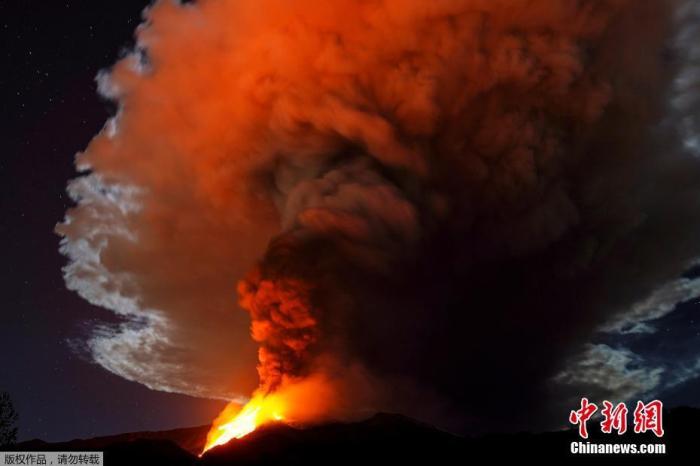China News Service, March 8th. According to Euronet, citing EUN News Agency, in the early morning of March 7, local time, a new paroxysmal eruption occurred again on the southeastern peak of Mount Etna in Italy, and the magma followed Valle del Valle on the east side. The Valle del Bove valley flows, and volcanic ash drifts eastward.
This is the 10th eruption of Mount Etna since it started on February 16. Affected by it, many cities in Sicily have declared a state of emergency.
On February 23, local time, Mount Etna in Sicily, Italy, erupted again. The eruption started from the crater in the southeast, and the whole process lasted for several hours.
According to reports, at 3:30 am local time on the 7th, a new eruption in Etna, Italy began again, and lava on the east side of the southeast crater of Etna began to overflow.
In response to urban pollution caused by volcanic ash, Nello Musumeci, chairman of the Sicily Region, declared a state of emergency in cities affected by volcanic ash on the 7th and allocated 1 million euros for urban sanitation.
Italy's National Institute of Geophysics and Volcanoes (INGV) stated that this is the 10th eruption of Mount Etna since February 16. The eruptive cloud began to form at 3:30 in the morning and spread eastward.
Beginning at 7:45 in the morning, the amplitude of the volcanic tremor rapidly dropped to a medium-to-low level, returning to weak energy.
According to observations by the Italian National Institute of Geophysics and Volcanoes, the eruption of Mount Etna ceased at 8:10 in the morning.
Volcanic ash covered several towns in Milo, Fornazzo, Giarre, Mascali and Riposto.
Statistics show that in some cities and towns, about 8 kilograms of volcanic ash falls per square meter, causing serious urban pollution.
Salvo Cocina, head of the Civil Defense Department of the Sicily Region, said that according to preliminary investigations, it is estimated that the eruption of Mount Etna will cause economic losses of about 10 million euros.
Regional health departments and national health agencies are verifying and assessing the health hazards caused by volcanic ash.
Mount Etna, located on the east side of Sicily, has a crater of about 35 meters in diameter, and its altitude changes with volcanic activity. It is currently about 3350 meters and is the most active active volcano in Europe.
Mount Etna began a new round of intensive eruptions in September 2019, with activities concentrated in the southeast crater formed in 1971, and the scale of the eruption began to increase in the past two months. Experts said that the current volcanic eruptions will not pose a danger to local residents, but the massive volcanic ash spewing will cause inconvenience to the lives of nearby residents. (Huang Xin)

